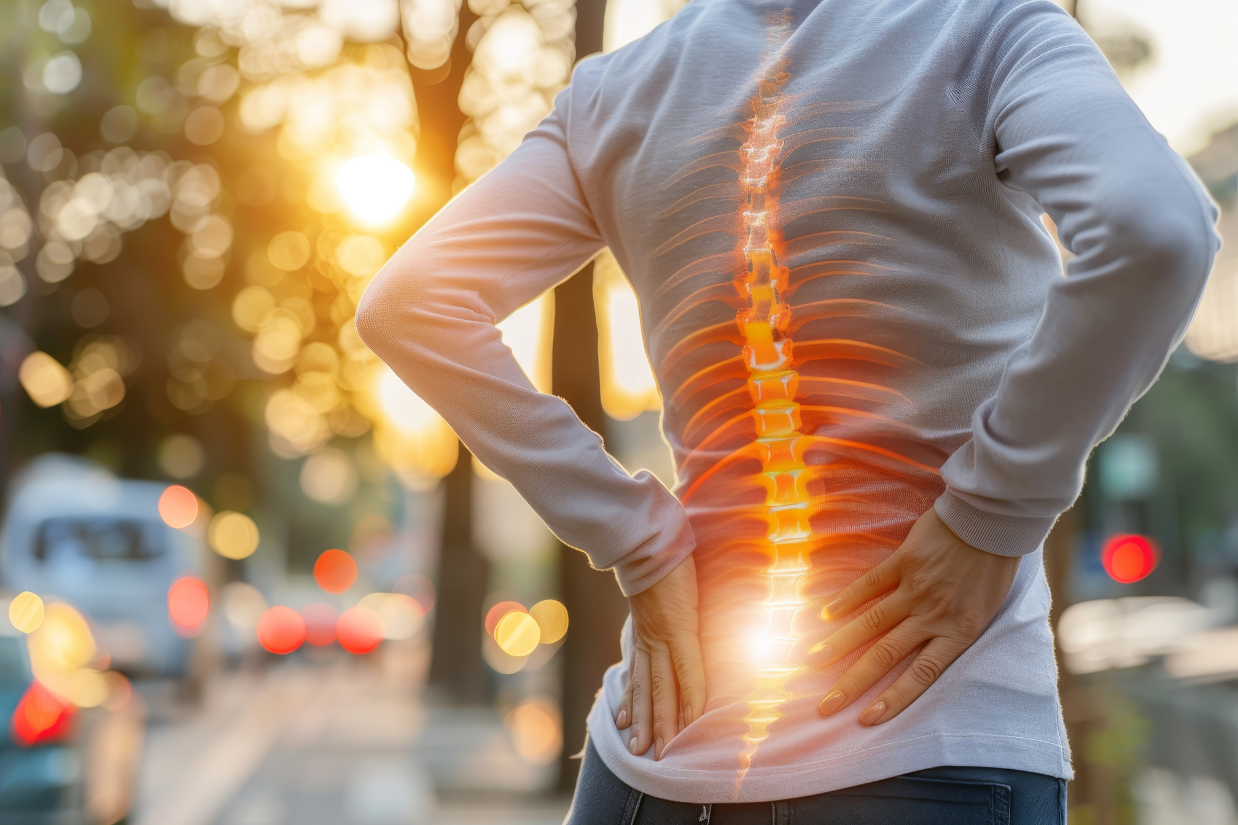The Aging Spine: Understanding Degenerative Disc Disease and Maintaining Spinal Health


Degenerative disc disease, which is most common in older adults, is a common cause of back pain and occurs when your spine begins to wear away.
After age 40, most people will begin to experience various degrees of spinal degeneration as the cushioning in the spine begins to wear away. It is estimated that almost 20% of U.S. adults have some amount of spinal degeneration by age 65. This number increases to approximately 35% by age 80, with women being most affected.
While the most common symptoms have been found to be neck and back pain, patients may also experience:
The condition is caused by the spinal discs wearing down. In a healthy back, there are rubber-like discs between the vertebra that impact your height and allow for smooth twisting and bending motions.
As a normal part of the aging process, these discs may begin to wear down, sometimes completely. This causes the bones to rub against one another, causing pain, stiffness and osteoarthritis.
Your physician will first ask you a series of questions about your symptoms. They may also order imaging scans such as X-ray, CT or MRI to better show the condition and alignment of your discs. A physical exam may also be performed to identify your nerve function, pain levels and overall strength.
It is most common for your physician to recommend non-invasive treatments first to see how your body responds. These may include physical therapy, medications or steroid injections. Some people may also find relief through treatments such as regular low-impact exercise and gentle stretching.
If you have tried multiple nonsurgical treatments and still have persistent pain, surgery may be your next treatment option. These options may include a Laminectomy, Laminotomy, Discectomy, or Spinal Fusion procedure.
While no one can prevent getting older, maintaining a healthy lifestyle has been proven to help slow the damage to spinal discs. Maintaining a healthy weight, not smoking, and getting regular exercise have all been proven to prevent spinal damage. It is also important to try and maintain proper posture, and avoid excessive alcohol usage – which acts as a diuretic and can cause worsened inflammation.
The spine is one of the most crucial components of the body in terms of overall wellness. It is responsible for supporting the body’s weight, protecting the spinal cord and facilitating movement. Maintaining good spinal health involves the combination of many healthy habits and lifestyle choices.
By taking proactive measures to maintain your spine health, you may be able to prevent the further development of spinal conditions, and reduce discomfort and pain as you age.
If you are experiencing neck, back or spine pain, the exceptional physicians of New Jersey Brain and Spine may be able to help. Contact us today for an appointment or second opinion. For more than 25 years, our physicians have compassionately cared for more than 40,000 patients with complex conditions.